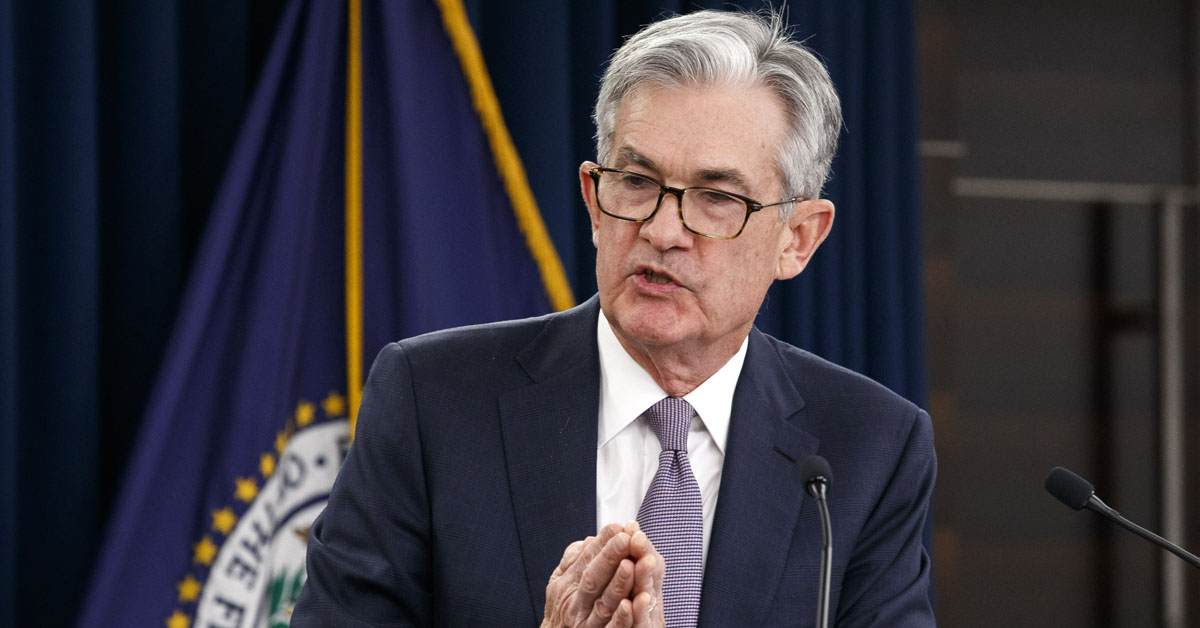There were no big surprises from the Federal Reserve on Wednesday, with the central bank following the widely anticipated route of keeping its anchor interest rate at a range of 5.25-5.5%.
The benchmark rate remains at its highest point in more than two decades, but with inflation cooling, the Federal Reserve has eased off its hawkish pattern of late. The statement released after Wednesday’s meeting of the central bank’s Federal Open Market Committee (FOMC), which sets national monetary policy, said as much, noting that “risks to achieving [the FOMC’s] employment and inflation goals are moving into better balance.” The FOMC also replaced a sentence regarding “the extent of any additional policy firming that may be appropriate,” adopting a more moderate tone in saying it will be data-driven in “considering any adjustments to the target range for the federal funds rate.”
The Federal Reserve also indicated that several cuts later in the year are likely, offering optimism to a housing industry battered by the elevated rate environment — although Fed chair Jerome Powell was swift to throw cold water on any inkling that cuts may be in the cards by the next FOMC meeting.
“Based on the meeting today, I would tell you that I don’t think it’s likely that the committee will reach a level of confidence [to lower rates] by the time of the March meeting, to identify March as the time to do that,” he said at the customary post-meeting press conference after being asked if he foresaw rates being reduced in the near term.
“But that’s to be seen. … When you ask me about ‘in the near term,’ I’m hearing that as March and that’s probably not the most likely case or what we would call the base case,” Powell said.
The decision to stand pat may relieve much criticism of the Reserve for now, considering how much vitriol the Fed stirred up over months of near-constant interest rate increases. Marty Green, principal at mortgage law firm Polunsky Beitel Green, posited that clamor for a lowering cycle may heat up soon to maintain a strong economy.
“Like a pilot landing a plane in the fog, the Federal Reserve is being very patient and deliberate before taking additional action to reduce interest rates,” he said. “As long as the economy remains relatively strong and inflation continues to moderate, as it has in recent months, the Fed can circle the runway for another meeting cycle or two before trying to navigate the soft landing it has hoped for.
“But the American consumer, who has been bolstering the economy so far, may very well be running on fumes at this point, and some interest rate relief in the coming months will likely be necessary for the economy to maintain a healthy growth pace.”
Powell, for his part, was resolute as ever in the Federal Reserve’s wait-and-see stance, repeating that “we think we have a ways to go” before the Fed’s target inflation range of 2% is reached. He acknowledged that interest-sensitive parts of the economy, such as housing, have seen outsized impacts from Fed policy. Still, asked about a recent letter sent to the Fed by some members of Congress to make housing more affordable, Powell, like Green, invoked the well-being of the American consumer, but in defense of staying the course.
“The job Congress has given us is price stability and maximum employment. Price stability is absolutely essential for people’s lives, mostly for people at the lower end of the income spectrum who are living at the edges, at the margins,” Powell said. “For someone like that, high inflation in the necessities of life, you’re in trouble, whereas even middle-class people have some scope to absorb higher costs. It’s our job. It’s what society’s asked us to do, is to do get inflation down, and the tools that we use to do it are interest rates.”
That hasn’t stopped many stakeholders, especially within the mortgage industry, to point out that calls for rate relaxation will only grow as the months go on. Rich Traub, partner at commercial real estate law firm Smith, Gambrell & Russell, called the Fed meeting result “a mixed bag” and noted that the “messaging on rate cuts was less than enthusiastic or promising.” Max Slyusarchuk, CEO of A&D Mortgage, said that “markets had already priced in a ‘no change’ from the Fed, but political pressure is mounting on the Federal Reserve to cut rates sooner rather than later.”
“All in all, for the real estate market, I don’t think today’s pronouncements move the market one way or the other,” Traub said. “I still see the market involved in a waiting game, and one that may take longer to play out than what is needed to jumpstart the marketplace.”
So when can the lending sector finally expect a rate cut?
“Unless [FOMC members] bend, we believe rates will begin to start to slowly pull back in the second half of this year, with many economists predicting a mortgage-positive outcome from the May meeting,” Slyusarchuk said.
As for the magnitude of an eventual lowering cycle, Lawrence Yun, chief economist at the National Association of Realtors, reminded the real estate industry not to expect too much easing, but remained confident that an eventual cut will have a meaningful effect.
“Let’s recall that before the COVID-induced economic lockdown, the Fed funds rate was near 2%, and the 30-year fixed mortgage rates were at nearly 4%,” Yun said. “We will not return to this level this year or next year. The budget deficit remains high, and the various inflation metrics remain above the comfort level. That means the mortgage rates will likely be in the 6% to 7% range for most of the year.
“This current rate is lower compared to the high of 8% a few months ago, which is helping to improve housing affordability. More homebuyers will return to the market. Many delayed home sellers may be willing to give up 3%-4% rates as life circumstances have changed, thereby boosting inventory. Home sales will no doubt rise this year.”






